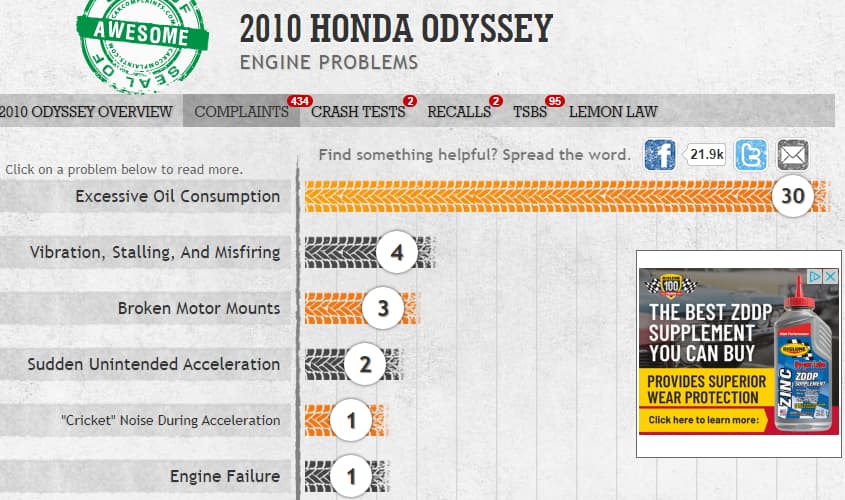I have owned a 2011 Odyssey for 3 years and started having rough and hesitated acceleration at low speeds. Turns out for about 7 years in a row, the Odyssey’s 3rd cylindar will leak oil around it over time and the oil gets around the spark plug and causes it to misfire. You don’t notice it at high speeds because the engine shuts down 2 cylindars to become more efficient. You have to replace the 3rd cylindar spark plug ($7 from NAPA, part #NGK93175) and I strongly suggest mixing 1 quart of Lucas oil with 3.5 quarts of Mobil 1 oil (4.5 qts total) at oil changes. Lucas oil helps seal the cylindar. I always use a Mobil 1 filter as well. I found a Muffler Man that will let me buy my own parts/oil and they just charge me for labor. ($15 cash for changing the plug in 10 minutes.) The #3 cylindar is in the back row, far right.
1 2 3
4 5 6
Leaking on the porcelain/plug boot side?? Or fouling the plug from the cylinder combustion side??
I leaking on the porcelain side you have a tube seal leaking (valve cover)…
If “leaking” on the combustion side, then you may have valve guide seal leaking or worn guides or worn piston oil control rings…
Seems hard to imagine how oil on the porcelain side of the spark plug would cause a misfire. I’m guessing the oil is contaminating the tip of the spark plug inside the combustion chamber, caused by what you say above.
I expect other Odyssey owners appreciate the tip, but I doubt this is a problem common to the Odyssey. Happens to be a problem with the OP’s car is all. It’s an interesting diagnostic conundrum b/c the car’s cylinder shut down function masks the problem at higher speeds.
It is a known problem with Honda’s cylinder deactivation engines, the rings stick and the engines consume oil.
Interesting. How is that function accomplished on Honda’s? I thought it was done using the valves, and the piston in the unused cylinder continued to move up and down. Just no compression.
Tube seals fail, Oil fills up until it gets to the plug boot and the oil swells the boot, spark follows the path of least resistance… Seen it on many different makes and models with the spark plug going through the valve cover…
If that is the case I would try some Marvel Mystery Oil, worth a try…
Honda’s VCM uses overhead cams . A solenoid unlocks the cam followers on one bank from their respective rockers, so the cam follower floats freely while the valve springs keep the valves closed.
Would that explain the comment above that the cylinder deactivation causes the piston rings to stick ? I don’t see the connection.
Here you go George, pretty good video about Honda’s Variable Cylinder Management (VCM), around 11:39 talkes about the problem with the pistons, and then the piston rings rotating allowing excessive oil to get to the combustion chamber and fouling the spark plugs…
Thanks, will watch vdo later. I was surprised the valves are all closed on inactive cylinder. You’d think the repeating compression/decompression would create a lot of heat & rob quite a bit of energy, but apparently that’s better than the energy required to move the air in then back out each cycle.
Air is free, it’s the stopping of the fuel going to the 3 cylinders that saves on fuel economy…
Cadillac did basically the same thing with the V-8-6-4 back in 1981 (but was NOT the 1st to do this as first time cylinder deactivation came to light was in 1905, with the Sturtevant 38/45hp. Three of its cylinders could be stopped for a more fuel-efficient cruise. The trick wasn’t tried again until the 1917 Enger Twin-Unit Twelve) and that should have been the last time… lol

